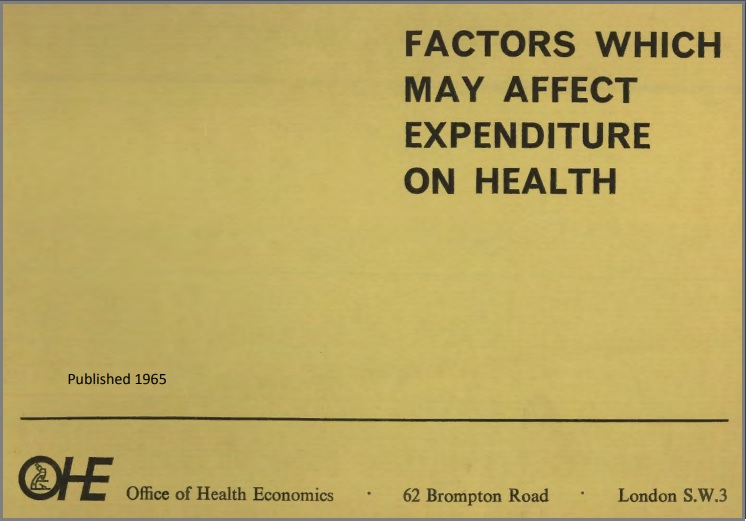Unlocking the Value of Combination Therapies

When the National Health Service was first planned it was thought that apart from the effects of inflation, its cost would remain constant over the years or perhaps even fall as effective medical care reduced the volume of ill health in the community.…
When the National Health Service was first planned it was thought that apart from the effects of inflation, its cost would remain constant over the years or perhaps even fall as effective medical care reduced the volume of ill health in the community. In the event, costs have risen steadily, and it has come to be acknowledged that at least in part this is the result of extending the scope of medical care. Diseases for which there was formerly no treatment may now respond to newly discovered medicines or newly developed surgical techniques. Ill health which was previously ignored may now be brought for treatment; the existence of the “clinical iceberg” of untreated illness has been recognised. This, however, is only one of many considerations which may influence expenditure on medical care and welfare services. Too little attention is often paid to other factors which by design or otherwise can either increase or reduce the nation’s spending on health.
To illustrate and focus attention on some of the types of event which can affect expenditure on medical care, the Office of Health Economics have produced a simple Analogue Computer of Health Expenditures (ACHE). It shows the cost of the health service and of sickness benefit payments in 1961/62. Apart from the total, it indicates the costs of the individual parts of the service—e.g. the hospitals and general medical services and the local health authorities. It also indicates how the costs are apportioned between each of the main groups of diseases. ACHE demonstrates the way in which each of these costs might change as a result of various events, or combinations of events. The purpose of this booklet is to describe how these changes have been estimated, and to discuss some of the underlying principles. In many cases, other assumptions could have led to other equally valid estimates. It is not so much the actual figures which are important; the main value of the exercise is to demonstrate the way in which many varied factors can affect health costs. Nevertheless, although the actual figures cannot be precise, there is little doubt that their different orders of magnitude generally give a true indication of the sorts of events which most greatly influence costs.
No attempt has been made to estimate long-term secondary effects which may occur. For example, a new treatment for cancer will increase the expectation of life would follow the introduction of a “cancer cure”, no allowance has been made for the consequent increase in the proportion of elderly people in the population. Conversely, it has been necessary to ignore the fact that some measures would take time to have an effect. For example, for the purpose of the calculations, the savings resulting from better health due to an “anti-smoking” campaign have been set directly against the cost of the campaign—even though in practice the benefits would not start to accrue for several years.
Nor do the changes in costs always reflect actual changes in the sums of money which would have to be spent on the health services. For example, an epidemic increases the work-load of general practitioners, and thus results in an additional burden on the service. However, if the epidemic is short-lived, this burden will be absorbed within the existing framework of the service. No extra doctors could be recruited to deal with the epidemic; and apart from the cost of the medicines they prescribe no extra payments would be involved—at least when doctors are remunerated by capitation fees or salary. Nevertheless in economic terms the extra calls on the doctors ‘time certainly involve some “cost”. The estimates, therefore, include these costs, which are a measure of the extra workload on the health service rather than an extra cash outlay. In other cases—for example, if all doctors receive an increase in their remuneration—the extra cost is immediately reflected in higher expenditure by the health services. In either case, in economic terms, the “costs” involve the use of extra resources in the provision of medical care.
In this description of some of the factors influencing the costs of medical care, they have been divided into broadly four categories. The first are the external economic and environmental changes whose occurrence is unrelated to the health service but which, nevertheless, influence its cost; secondly, there are medical advances, making new techniques available for the prevention and treatment of illness; thirdly, there are changes in the organisation and practice of medicine; finally, there are changes in the expectations of the public and the professions. Each of the latter two factors may, in turn, have resulted indirectly from medical progress; indeed there is a considerable overlap between each of the categories and, in some cases, one single event affecting the cost of the health service may reflect changes under all the four broad headings.
Factors Which May Affect Expenditure on Health
